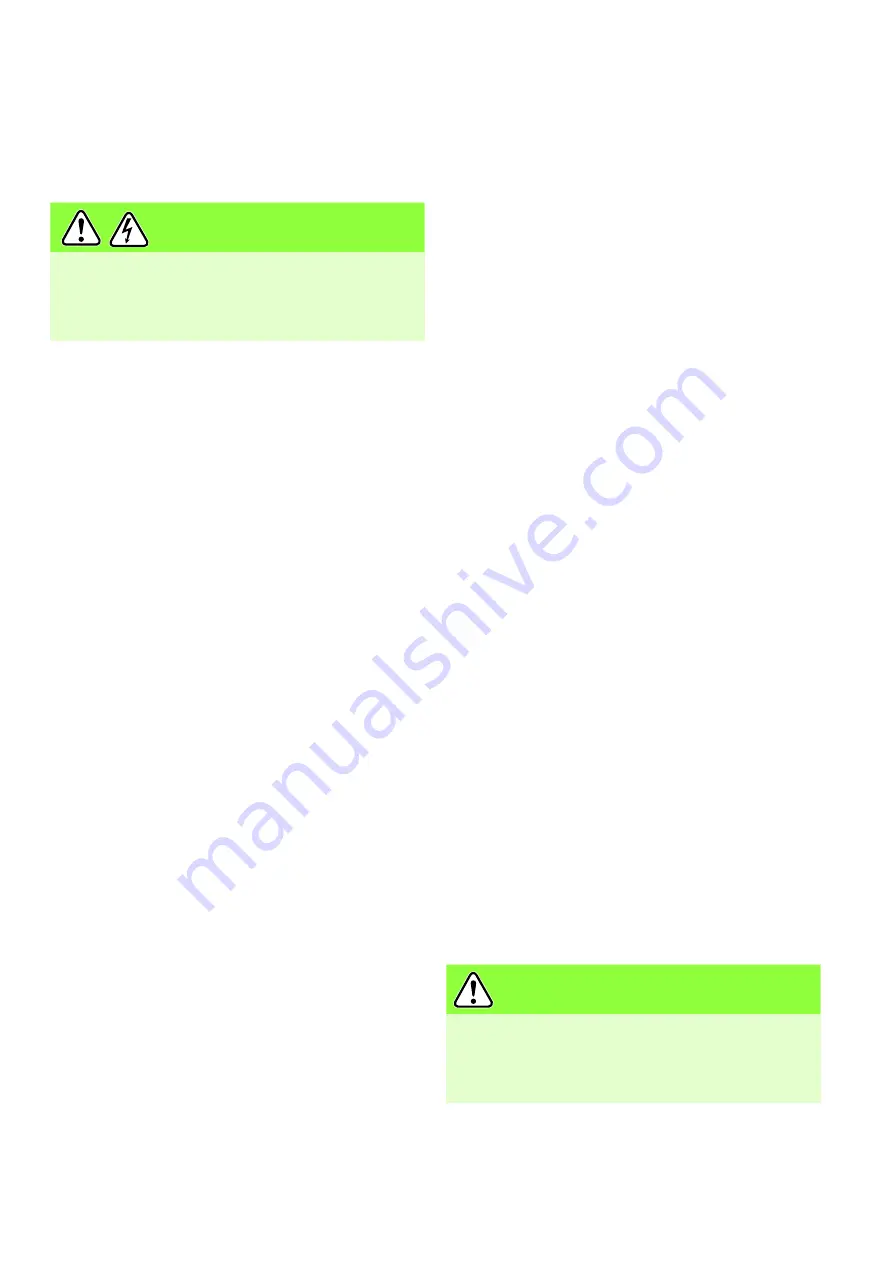
16
OF 2200
One of he reducing rings (469881 - 469885) listed
above must be inserted in reducing ring 473812
to reduce t0he diameter d.
7
Adjustments
WARNING
Risk of accident, electric shock
• Always pull the plug out of the socket before
performing any type of work on the machi-
ne.
7.1
Fitting the router stop
Use a router stop when performing linear feed
work (straight workpieces).
• Secure the router stop by inserting the two
screws [13-1] into the holes [12-1]. Use holes
[12-2] if a greater distance is required between
the routing tool and router stop.
Align the router stop with reference to the scales
[13-3] and markings [13-4].
If necessary, you can use the screws [14-2] to
adjust the perpendicularity of the router stop in
relation to the bench surface on both sides.
• Unscrew the rotary knob [15-1] on the press-
down fi xture.
• Slide the press-down fi xture all the way into the
opening [15-2] on the router stop.
• Tighten the rotary knob [15-1].
7.2
Adjusting the router stop
Adjusting the rulers
The distance between the two rulers on the router
stop and the cutting circle of the cutter tool must
always be between 2 mm to 5 mm [16]. Adjust the
distance as follows:
• Loosen the screws [17-1] and [174].
• Slide the rulers [17-2] and [17-3] apart.
• Set the routing tool in the required position (see
7.7 Adjusting the routing tool height).
• Move the rulers [17-2] and [17-3] until they are
between 2 and 5 mm from the cutting circle of
the routing tool.
• Tighten the screws [17-1] and [17-4].
If the adjustment range of either ruler is insuf-
fi cient:
• Loosen the screws [14-1] on both sides of the
router stop.
• Move the ruler to the required position.
• Tighten the screws [14-1] on both sides.
Adjusting the router stop in parallel
Proceed as follows to adjust the entire router stop
for profi le routing, for example:
• Loosen the screws [18-1] and [18].
• Move the router stop to the required position Y
(overhang of the cutting circle in relation to the
rulers) [16].
Align the router stop with reference to the scales
[13-3] and markings [13-4].
• Tighten the screws [18-1] and [18-2].
Adjusting the runout ruler
Proceed as follows to adjust the runout ruler
[19-5] in relation to guide ruler [19-1]:
• Loosen the screw [19-2].
• Use a strip of straight material to align the guide
and runout rulers in relation to one another.
• Only turn the dial ring [19-3] to reset to zero.
• Turn the adjusting wheel [19-4] to set the desired
dimension X (overhang of the guide ruler in rela-
tion to the runout ruler). The distance between
each line on the dial ring [19-3] is 0.1 mm - one
full turn of the ring represents 1 mm.
• Tighten the screw [19-2].
Adjusting the press-down fi xture
Adjust the bearing shoe on the press-down fi xture
so that the workpiece is guided straight and does
not stray to either side. The bearing shoe prevents
inadvertent contact with the cutter tool.
• Unscrew the rotary knob [20-5].
• Lower the vertical bearing shoe [20-3] down to
the workpiece.
• Tighten the rotary knob [20-5].
• Loosen the screw [20-4].
• Slide the horizontal bearing shoe [20-1] down
to the workpiece. If the workpiece is wider than
the adjustment range of the horizontal bearing
shoe, turn the horizontal bearing shoe verti-
cally.
To turn the horizontal bearing shoe, release the
lever [20-2] and swivel the complete press-down
fi xture upwards.
WARNING
Risk of injury
•Before working with the machine, always
swivel the press-down fi xture down again until
the lever [20-2] engages.
• Tighten the screw [20-4].
Summary of Contents for CMS-OF
Page 2: ......
Page 4: ...8 OF 1400 8 1 8 2 8 3 8 4 8 5 8 4 5 1 7 1 7 2 7 3 7 4 7 5 5 2 5 3 5 4 6 1 6 2 5 6 7 OF 1010 ...
Page 99: ...99 ...
Page 100: ...100 ...
Page 101: ...101 ...
Page 102: ...102 ...
Page 103: ...103 ...
Page 104: ...15 15 1 15 2 16 2 5 m m Y 17 1 17 2 17 3 17 4 x 18 19 18 1 18 2 19 5 19 1 19 2 19 3 19 4 17 ...
Page 105: ...22 5 22 1 22 2 22 4 22 3 22 20 21 21 1 21 1 21 2 20 1 20 2 20 3 20 4 20 5 21 3 21 4 21 5 ...
Page 106: ...24 3 24 4 24 2 24 1 24 23 ...
Page 107: ......
Page 108: ......
















































